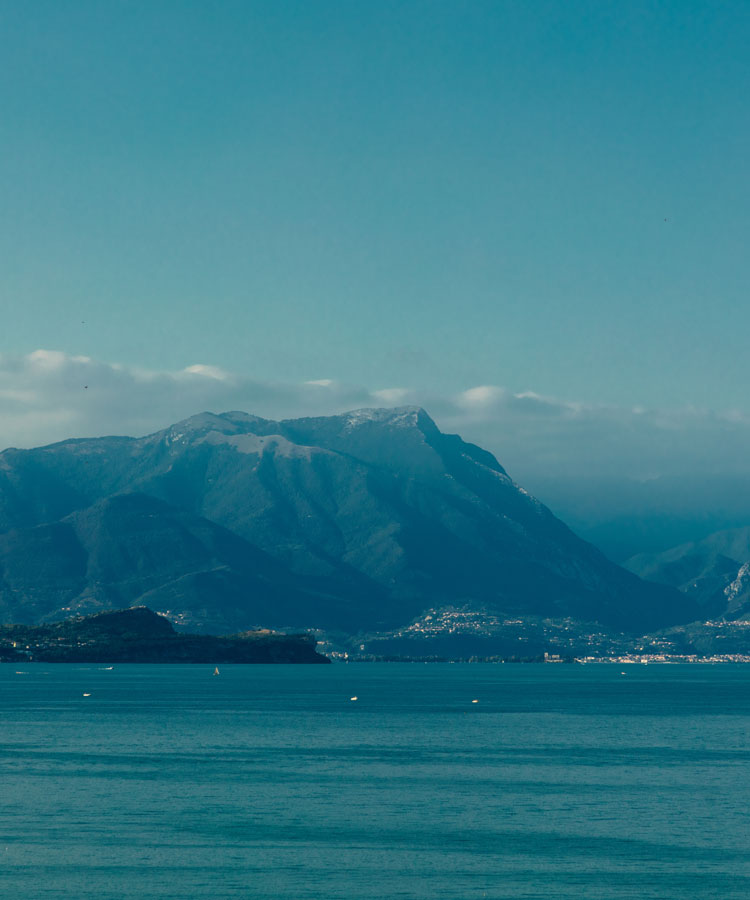
This article and the Visions of Italy series is sponsored by Santa Margherita USA.
Each spring, Italy’s beautiful northern lakes come into focus as the preferred holiday setting for the rich and famous. Though Lake Como might be the area’s best-known celebrity destination, cognoscenti have long marked the start of spring by heading to Lake Garda, drawn to its thermal waters, ancient Roman ruins and picturesque scenery. At this majestic lake, close to the romantic city of Verona, nearly every angle provides another easily Instagrammable masterpiece.
When the first buds and blossoms of spring finally begin to appear, the longstanding appeal of Lake Garda is obvious: The area is home to over 60 species of orchids and other rare flowers, including the charming, white-petaled Baldo anemone found atop soaring Mount Baldo, whose peak is accessible via cable car from the lakeside town of Malcesine. Other attractions of the season include the lake’s International Spring Festival — Italy’s largest — and the asparagus festival in the town of Rivoli Veronese, as well as the medieval-themed commemoration of Emperor Otto II, which takes place in the charming commune of Lazise every May. That’s to say nothing of the area’s legendary outdoor activities, which include boating, paddleboarding, windsurfing, hiking, and mountain biking.

When it comes to wine, Lake Garda’s main attraction is its beloved Lugana region. Situated on the lake’s southern shore, the temperature-moderating influence of Garda, as well as the surrounding low glacially-carved morainic hills, create a microclimate with warm days and cool nights, making the area well-suited for grape growing. Relatively flat, with naturally chalky and fairly uniform clay soil, Lugana straddles the regional boundary between the Veneto and Lombardia, one of few DOCs (Denominazione di Origine Controllata) to do so.
This terroir has proven to be perfect for still white wines — which make up 95 percent of Lugana production — though the region also produces a small amount of sparkling wine, as well as late-harvest dessert wines. A DOC since 1967, Lugana is revered for its charismatic dry whites, filled with rich notes of tropical fruits, citrus and nuts — fresh, fruity flavors that pair perfectly with the budding spring season.

The area’s standout winery Cà Maiol was founded by the Walter Contato family here over 50 years ago, though its history goes back even further. The winery’s main building was constructed in 1710, with the name of the original owner, Sebastiano Maiolo, still visible on the lintel of the winery’s historic manor house. Located just steps from the glimmering lake shore, the vineyards soak up the sun as it reflects off the water and the surrounding hills like an amphitheater.
The primary focus at Cà Maiol has always been on the Turbiana grape, a.k.a. Trebbiano di Lugana. The story of wine in Lugana is a matter of ancient lore — and of a slightly confusing set of grape names. Regulations say that white wines from Lugana DOC must be made at least 90 percent from the region’s storied Turbiana grape. Until recently, Turbiana was believed to be a variant of Trebbiano called Trebbiano di Lugana (and cousin of nearby Trebbiano di Soave). But recent DNA research showed that both Turbiana and Trebbiano di Soave are actually versions of Verdicchio — a grape renowned for producing highly sought-after white wines. This makes way more sense, considering that Turbiana produces typically pale, straw-colored wines with vibrant floral and citrus notes. While Lugana wines are allowed to contain up to 10 percent of other grapes, today many producers choose to use 100 percent Turbiana in order to highlight the grape’s unique characteristics.

At Cà Maiol, the single-vineyard, old-vine selection Molin shows off the possibilities of 100 percent Trebbiano di Lugana with flavors of kiwi and other tropical fruits, as well as almonds and apricots that layer into a long finish of stone fruit and citrus. This wine is a particularly good fit for delicate fish dishes, steak tartare, grilled vegetables, and other springtime flavors.
Perfect for accompanying the first vegetable salads of the year, wines like Cà Maiol’s more youthful Lugana showcase Trebbiano di Lugana in its purest form, emphasizing the characteristic apple, pear, and citrus flavors of the region, courtesy of the vineyard’s layered clay soil. Pair this with pasta, risotto, shellfish, and seafood dishes, which will highlight the wine’s balanced acidity, an important characteristic of Turbiana.
There are plenty of great reasons to head to Lake Garda in the spring. But if you can’t make it all the way to northern Italy, just open a bottle of Lugana and pour yourself a glass. After the first sip, you’ll be dreaming of a shimmering lake, and a beautiful world suddenly bursting into flower.
This article is sponsored by Cà Maiol.



